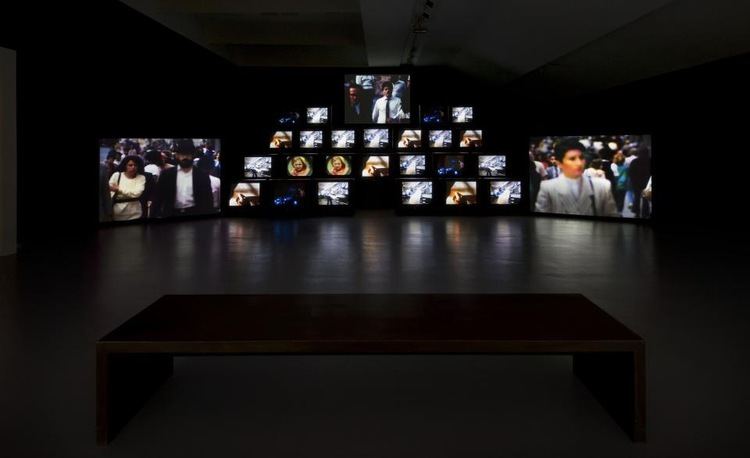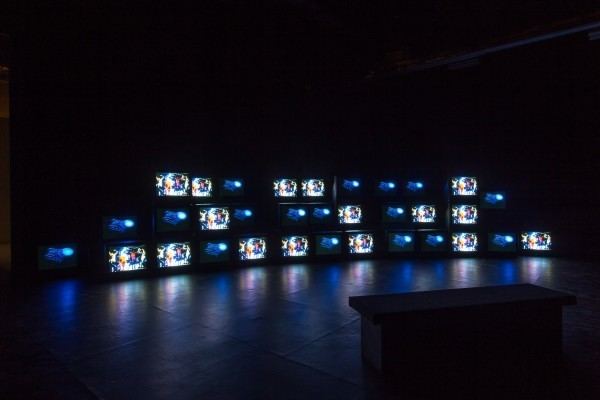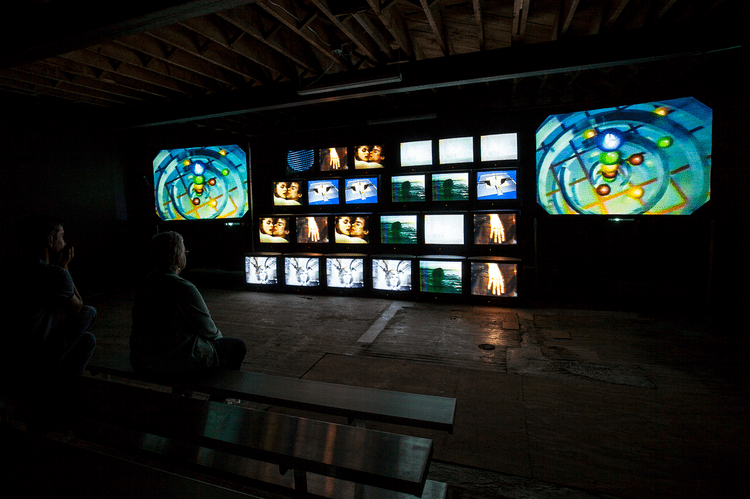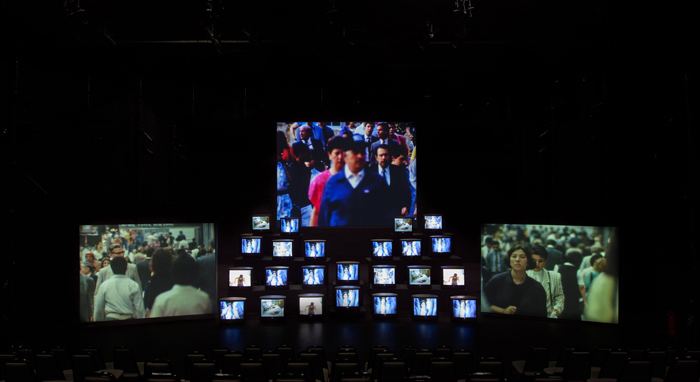Name Gretchen Bender Role Artist | Books Culture on the Brink | |
 | ||
Profiles | ||
Gretchen bender
Gretchen Bender (1951 in Seaford, Delaware – 2004 in New York City) was an American artist who worked in film, video, and photography. She was from the so-called 1980s Pictures Generation of artists, which included Cindy Sherman, Robert Longo, Jack Goldstein, Laurie Simmons and Richard Prince. These artists mixed elements of Conceptual Art and Pop Art, using images from popular culture to examine its powerful codes.
Contents
- Gretchen bender
- Gretchen bender artificial treatment 1988
- Early life and education
- Career
- Collections
- References

Bender also designed the credits for the TV show America's Most Wanted, which Roberta Smith of the New York Times suggested "may have originated the rapid-fire hyperediting now pervasive in film, television and video art." She also directed music videos for such musicians as Babes in Toyland, edited music videos directed by Robert Longo, and designed sets for the choreographers Bill T. Jones and Molissa Fenley, including the former's Still/Here that New Yorker dance critic Arlene Croce condemned.

Her work is in the collections of the Museum of Modern Art in New York City, the Pompidou Center in Paris and the Menil Collection in Houston.

Gretchen bender artificial treatment 1988
Early life and education

She was born in Seaford, Delaware to Charles and Carolyn Bender, and had one brother and two sisters. She earned a bachelor of fine arts from the University of North Carolina at Chapel Hill in 1973. She moved to New York City five years later.
Career
She had her first New York solo gallery show in the East Village in 1983 at the Nature Morte Gallery. She appropriated images from the Neo-Expressionist painters of her generation, and in her more dramatic pieces put computerized patterns together with grisly images from mass murders. A theme throughout her work is the contrast between the power of corporations and technology with the struggle of individual human beings.
Eventually showing with Metro Pictures, her mid-career retrospective was organized by the Everson Museum of Art in Syracuse in 1991, and toured internationally, as did her multimedia installations Total Recall (1987) and Dumping Core (1984). The former, along with Wild Dead (1984), which she showed at Danceteria, the New York City dance club, have been called her central installations from that decade. Total Recall, was an eight-channel installation with 24 TV monitors and two rear projections that combined corporate logos from TV commercials, computer-generated forms by Amber Denker, doctored clips from Salvador with a post-punk soundtrack by Stuart Argabright. She was included in the 1989 Whitney show "Image World: Art and Media Culture," with Jeff Koons, Jenny Holzer, Barbara Kruger, Cindy Sherman, Sherrie Levine, and David Salle and in 1992, "Contemporary Women Artists: Mixed Messages" with Kruger and Sherman again, and Nancy Dwyer, held at the Castellani Art Museum, on the campus of Niagara University in 1992. Her 42-foot-long work People in Pain, a vinyl field backlit by neon illuminating a series of movie titles that point to the cultural and narrative meanings of the films named, was included in the 1989 "Forest of Signs" show at the Los Angeles Museum of Contemporary Art, and later, in 2014 in the Whitney Biennial. She taught video art at Hunter College in the 1990s.
She died of cancer in 2004 in New York City.
Collections
Her work is in the collections of the Museum of Modern Art in New York City, the Pompidou Center in Paris and the Menil Collection in Houston.
